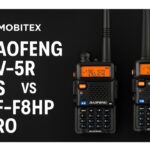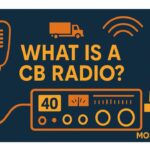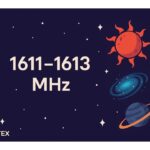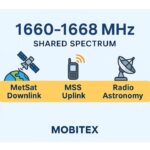Frequency
1283 MHz
Range
1240–1300 MHz
Band Group
L-Band Amateur (23 cm) & Shared (1240–1300 MHz)
🌐 Summary
The 1283 MHz allocation is part of the L-Band Amateur (23 cm) & Shared (1240–1300 MHz) spectrum. This range is used worldwide for critical applications that keep our communications and infrastructure running smoothly. On this page we highlight how each band is applied in real systems, from regulatory assignments to everyday devices. Our goal is to make spectrum data clear and practical for engineers, regulators, and enthusiasts alike.
Key uses of this band include: The 23 cm amateur band (1240–1300 MHz) supports FM/SSB/CW, digital voice, EME, DATV, and amateur-satellite uplinks (1260–1270 MHz). Amateur is secondary and must protect RNSS (e.g., E6 at 1278.75 MHz) and radiolocation..
Follow national 23 cm band plans; avoid RNSS centers (1268.52, 1278.75 MHz)

Overview
🔍 Explore the full RF Spectrum database
📡 Band & Geometry key
| Field | Value |
|---|---|
| Wavelength (m) | 0.233665 |
| Waveforms | FM/SSB/CW; Digital Voice (D-STAR/DMR/C4FM); DATV; EME modes |
| Antenna Form Factor (Typical) | Yagi/dish/helix for weak-signal/EME; verticals for FM/repeaters; DATV dishes |
| Band Family | Amateur / L‑Band |
| Band | 1240–1300 MHz Amateur 23 cm & Shared Services (RNSS/Radiolocation coexistence) |
| Primary Common Name | L-band |
| FSPL @ 1 km [dB] | 94.6 |
| FSPL @ 10 km [dB] | 114.6 |
| Fresnel Radius @ 1 km (m) | 7.643 |
| Band Group | L-Band Amateur (23 cm) & Shared (1240–1300 MHz) |
| Tax Band Family | UHF/L-band Transition |
| Tax Band Class | 1240 MHz – 1300 MHz UHF/L-band Transition Amateur |
🧩 Applications & Usage
| Field | Value |
|---|---|
| Primary Application | Amateur radio (23 cm) voice/data/ATV; coexistence with radiolocation and RNSS (e.g., 1260–1300) |
| Lower Neighbor Use | RNSS & Radiolocation (≤1240 MHz) |
| Upper Neighbor Use | Radiolocation/other services (≥1300 MHz) |
| Typical Services Devices | – |
| Market Common Devices | 23 cm transceivers, transverters, filters, LNAs, DATV modulators |
| Refarming Use | – |
| Device Ecosystem Size | Niche but active |
| Device Hotspots (MHz) | 1296.1; 1260–1270 |
| Device Category | Amateur radio (23 cm) |
| Typical Use Cases | Repeaters, weak-signal, ATV/DATV, satellite uplinks |
| Modulation (Device) | FM/SSB/CW/DV; DVB-S/S2 for DATV |
| Channel Width (Device) [kHz] | 6.25–25 (narrowband); 1000–8000 (DATV) |
| Device Region Profiles | Band plans vary by region |
| Per-Region EIRP Or Duty (Device) | Per license; ERP control recommended near RNSS |
| Allocation Relevance (Device) | Amateur experimentation and comms |
| Adjacent-Band Collision Risks (Device) | RNSS E6/B3; radiolocation; out-of-band ATV |
| Example Devices Or Skus | Icom/Kenwood transverters, Kuhne/DB6NT 23 cm gear, DATV modulators |
| Common Protocols | FM/SSB/CW/DV; DVB-S/S2 |
🗒️ Notes
| Field | Value |
|---|---|
| Receiver Selectivity Notes | Prefer sharp front-end filters/notches near RNSS E6 and B3 |
| Interference Notes | Use band-plans, reduce ERP, directional antennas, and filters; avoid RNSS center tones |
| Compatibility Risk Notes | High near RNSS centers (1268.52, 1278.75 MHz) — protect navigation services |
| Notes | Follow national 23 cm band plans; avoid RNSS centers (1268.52, 1278.75 MHz) |
| Propagation Notes | LOS limited; occasional enhanced paths (ducting/tropo); EME possible |
⚙️ Technical Rules
| Field | Value |
|---|---|
| Lower Band Frequency Limit | 1240 |
| Upper Band Frequency Limit | 1300 |
| EIRP Indoor Limits | Per national amateur rules; observe coexistence constraints with RNSS |
| EIRP Outdoor Limits | Per license; minimize interference towards RNSS/radiolocation |
| PSD Limit | Per national rules; avoid RNSS E6 (1278.75 MHz) and BeiDou B3 (1268.52 MHz) |
| Emission Mask Class | Service-specific (amateur narrowband/DATV) |
| Guardband Minimum [kHz] | 500 |
| Typical Bandwidths | Narrowband 6.25–25 kHz; Wideband DATV 1–8 MHz; amateur-sat uplinks 1260–1270 MHz |
| Autocalculated Bandlimits | 1240.0–1300.0 MHz |
| Typical Bandwidths (Estimated) | Narrowband 6.25–25 kHz; Wideband DATV 1–8 MHz; amateur-sat uplinks 1260–1270 MHz |
| Max EIRP [dBm] | Per license; ERP control recommended near RNSS |
| Power Source Or Duty Profile (Typical) | Amateur stations; duty varies with mode; DATV higher average power |
| Channelization Plan | IARU guidance; national band plans |
| Channelization | Guideline plans (not hard-licensed): weak-signal ~1296.1 MHz, DATV segments, repeater channels |
| Guard Band Requirement | ≥0.5–1 MHz near RNSS center tones |
| OOB Emission Limit [dBm/MHz] | Tight OOBE/adjacent suppression; protect RNSS E6 |
| Spurious Emission Limit (dBm) | Per national amateur standards |
| RX Blocking Min [dBm] | Consider strong-signal environments near radar/RNSS |
| Duplexing | Unpaired |
| Duplexing Information | No paired DL/UL; amateur service uses simplex, repeaters, and split offsets by convention |
| Uplink Pairing | Not applicable (unpaired amateur service) |
| Downlink Pairing | Not applicable |
| Paired Band Info | Not applicable |
| Max EIRP [dBm] | Per national amateur rules; minimize interference towards RNSS |
| Channelization Block Size | – |
| 3GPP Band Number | |
| Example 3GPP Bands | None (non-3GPP) |
| LTE Uplink Bands | None |
| LTE Downlink Bands | None |
| NR Uplink Bands | None |
| NR Downlink Bands | None |
| Guard Bands | ≥2 MHz guard band around 1260 MHz and 1300 MHz to protect RNSS (Galileo E6 / BeiDou E6); minimize high‑power EIRP near RNSS edges. |
| Protocol Or Standard | IARU band plan; DV modes; DATV |
🌎 Country Overrides
| Field | Value |
|---|---|
| Tax Service Category | Other / Various |
| Tax License Type | Amateur (Licensed) — Secondary; RNSS/Radiolocation protections apply |
| Tax Regions | Global (ITU Regions 1/2/3) — national variations |
| ITU Region 1 (Europe, Africa, Middle East (west of Persian Gulf), Western Russia & Mongolia) | Amateur (23 cm) secondary; RNSS coexistence in 1260–1300 MHz (e.g., Galileo E6 / BeiDou / QZSS). Protection of RNSS may constrain amateur use; national footnotes apply. |
| ITU Region 2 (North America, South America, Central America, Caribbean, Greenland, Eastern Pacific Islands (Americas region)) | Amateur secondary where permitted; RNSS coexistence in 1260–1300 MHz (e.g., international RNSS systems). Coordination with radiolocation required; national rules apply. |
| ITU Region 3 (Asia, Australia, Pacific Islands, Oceania, Indian Subcontinent, East Asia & Southeast Asia) | Amateur secondary; RNSS coexistence in 1260–1300 MHz (e.g., BeiDou / QZSS / regional RNSS). National constraints and coordination apply. |
| License Type | Amateur (Licensed) / Shared |
| Primary Application | Amateur radio (23 cm) voice/data/ATV; coexistence with radiolocation and RNSS (e.g., 1260–1300) |
| Primary Services | Amateur, Amateur-Satellite (select sub-bands); secondary/shared with radiolocation |
| Spurious Emission [dBm] | Per national amateur standards |
| Lower Neighbor Use | RNSS & Radiolocation (≤1240 MHz) |
| Upper Neighbor Use | Radiolocation/other services (≥1300 MHz) |
| Licensing Model | Service-specific licensing (government/assigned); Amateur uses national amateur licensing |
| Typical Services Devices | – |
| US FCC Alloc | Amateur (secondary); Radiolocation primary; RNSS present (E6/B3)– |
| CA IC Alloc | Amateur (secondary); Radiolocation/RNSS present– |
| UK Ofcom Alloc | Amateur (secondary); RNSS/radiolocation constraints; national notices apply– |
| US Ref | – |
| Typical Bandwidths | Narrowband 6.25–25 kHz; Wideband DATV 1–8 MHz; amateur-sat uplinks 1260–1270 MHz |
| Market Licensing Model | Not commercial spectrum; service-assigned or amateur licensing |
| Market Common Devices | 23 cm transceivers, transverters, filters, LNAs, DATV modulators |
| Fresnel Radius (1st, 1 km) [m] | 7.643 |
| Typical Bandwidths (Estimated) | Narrowband 6.25–25 kHz; Wideband DATV 1–8 MHz; amateur-sat uplinks 1260–1270 MHz |
| Auction Status | Not auctioned (amateur service) |
| Refarming Use | – |
| Typical Site Spacing km | Repeaters 10–50 km; weak-signal sites sparse / Repeaters 30–150 km; EME/contest sites sparse |
| Device Ecosystem Size | Niche but active |
| Traffic Load Share | |
| Device Hotspots (MHz) | 1296.1; 1260–1270 |
| Device Category | Amateur radio (23 cm) |
| Typical Use Cases | Repeaters, weak-signal, ATV/DATV, satellite uplinks |
| Typical Center Frequencies [MHz] | 1296.1 (weak-signal), 1260–1270 (sat uplinks) |
| Rule Part (Fcc Or Region) | FCC Part 97 (US); national amateur rules elsewhere |
| Modulation (Device) | FM/SSB/CW/DV; DVB-S/S2 for DATV |
| Channel Width (Device) [kHz] | 6.25–25 (narrowband); 1000–8000 (DATV) |
| Device Region Profiles | Band plans vary by region |
| Per-Region EIRP Or Duty (Device) | Per license; ERP control recommended near RNSS |
| Allocation Relevance (Device) | Amateur experimentation and comms |
| Adjacent-Band Collision Risks (Device) | RNSS E6/B3; radiolocation; out-of-band ATV |
| Example Devices Or Skus | Icom/Kenwood transverters, Kuhne/DB6NT 23 cm gear, DATV modulators |
| Antenna Form Factor (Typical) | Yagi/dish/helix for weak-signal/EME; verticals for FM/repeaters; DATV dishes |
| Power Source Or Duty Profile (Typical) | Amateur stations; duty varies with mode; DATV higher average power |
🛡️ Regulatory & Neighbors
| Field | Value |
|---|---|
| Lower Band Frequency Limit | 1240 |
| Upper Band Frequency Limit | 1300 |
| Rx Blocking Min dBm | Consider strong-signal environments near radar/RNSS |
| Lower Neighbor Use | RNSS & Radiolocation (≤1240 MHz) |
| Upper Neighbor Use | Radiolocation/other services (≥1300 MHz) |
| Lower Neighbor Band | RNSS/Radiolocation |
| Lower Neighbor Range | 1215–1240 MHz |
| Upper Neighbor Label | Radiolocation / Other Services |
| Upper Neighbor Range | 1300–1350 MHz |
| Adjacent-Band Collision Risks (Device) | RNSS E6/B3; radiolocation; out-of-band ATV |
| Real-World Range (Indoor/Outdoor) | Line-of-sight; extended via repeaters/EME/tropo |
| US FCC Alloc | Amateur (secondary); Radiolocation primary; RNSS present (E6/B3)Amateur (secondary); Radiolocation primary; RNSS present (E6/B3) |
| CA IC Alloc | Amateur (secondary); Radiolocation/RNSS presentAmateur (secondary); Radiolocation/RNSS present |
| UK Ofcom Alloc | Amateur (secondary); RNSS/radiolocation constraints; national notices applyAmateur (secondary); RNSS/radiolocation constraints; national notices apply |
| Regulatory References | US: -; CA: -; UK: – |
| Global Harmonization | Partial (amateur); RNSS/radiolocation have priority constraints |
| Crossborder Coordination | – |
| Sharing Mechanism | Amateur secondary to RNSS; use time or frequency separation to avoid interference. Coordination zones around RNSS ground stations required. |
| Auction Status | Not auctioned (amateur service) |
| Guard Or Pair | Guard near RNSS E6 (1278.75) and BeiDou B3 (1268.52) |
📈 Market & Measurements
| Field | Value |
|---|---|
| Noise Floor | Typical −101 to −105 dBm/Hz (contextual) at L‑band assumptions |
| Interference Cases | Amateur↔RNSS E6/B3; Amateur↔Radiolocation |
| Lower Neighbor Range | 1215–1240 MHz |
| Upper Neighbor Range | 1300–1350 MHz |
| Interference Notes | Use band-plans, reduce ERP, directional antennas, and filters; avoid RNSS center tones |
| Market Licensing Model | Not commercial spectrum; service-assigned or amateur licensing |
| Market Commercial Value | Amateur-focused; limited commercial value; high experimentation value |
| Market Common Devices | 23 cm transceivers, transverters, filters, LNAs, DATV modulators |
| Market Deployment Density | Localized around repeaters and active amateur communities |
| Noise Floor (Estimated) | Typical −101 to −105 dBm/Hz (contextual) at L‑band assumptions |
| Market Commercial Value (Estimated) | Amateur-focused; limited commercial value; high experimentation value |
| Ecosystem Maturity | – |
| Indoor Penetration | – |
| Known Interference | Protect RNSS receivers (Galileo/BeiDou/QZSS) in 1260–1300 MHz; avoid high‑EIRP amateur beacons near RNSS center frequencies. |
| Device Ecosystem Size | Niche but active |
| Real-World Range (Indoor/Outdoor) | Line-of-sight; extended via repeaters/EME/tropo |
| Antenna Form Factor (Typical) | Yagi/dish/helix for weak-signal/EME; verticals for FM/repeaters; DATV dishes |
| Ecosystem Maturity | – |
| Device Ecosystem Size | Niche but active |
| Chipset Availability | Available via amateur transverters/modules; not mass-market 3GPP |
| Operator Deployments | Not operator-based |
| Technology Generations Deployed | N/A (non-3GPP) |
| Roaming Support | N/A (amateur service) |
| Traffic Load Share | |
| Indoor Penetration | – |
| Known Interference | Protect RNSS receivers (Galileo/BeiDou/QZSS) in 1260–1300 MHz; avoid high‑EIRP amateur beacons near RNSS center frequencies. |
| Occupancy | Low to moderate; varies by region and repeater density |
| Occupancy Bucket Pct | 10–30% (contextual) |
| Latency Profile | Real-time comms typical; mode-dependent |
| Common Channels Or Profiles | National band plan segments |
| Security Features | Amateur identification; no network-grade security |
| Lbt Or Fhss Requirement | Not typical (service rules vary) |
| Popularity (Installed Base) | Moderate, region-dependent |
| Coexistence Tips | Notch filters near RNSS; obey national band plans; ERP management; antenna isolation |
| Latency Class | Application-dependent; real-time comms typical |
| Device Hotspots (Scoped && Tagged) | Weak-signal: ~1296.1 MHz; AMSAT uplinks: 1260–1270 MHz; DATV segments |



